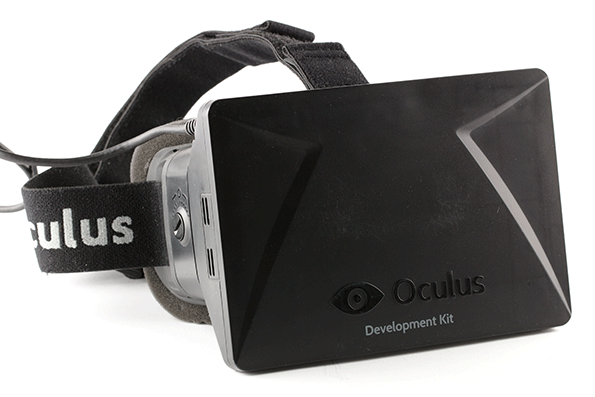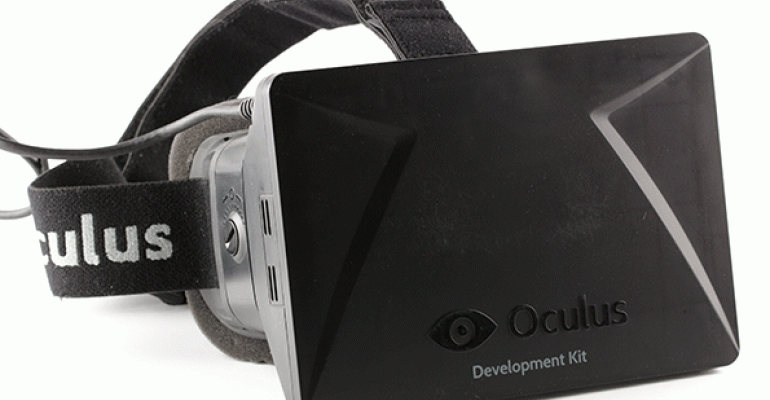
I read a fascinating article in Wired on Oculus Rift and the future—the very near future—of augmented reality on a recent flight to Los Cabos, Mexico, for the IRF Invitational, and those who think it’s just for gamers need to think again. Now that the commercial availability of technology that can provide fully immersive virtual experiences without making you nauseous is closing in, the possible applications for meetings, conferences, and incentive travel are just a tad mind-boggling.
As the article points out,
It’s easy to imagine strapping on a Rift and finding yourself across a table from someone who is actually thousands of miles away (or at least you’ll be across from their avatar)… The list of potential uses goes on. Bring a classroom full of kids inside any museum in the world—no lines, no price of admission. Hell, that goes for vacations too. Even getaways of the mental variety: Why spring for a shaman-guided ayahuasca trip in Peru when you can dive into a drug-free epiphany anytime you want? … “Hardware, while essential, is just an enabler,” [Michael Abrash, an engineer at Valve] says. “In the end, the future of VR lies in the unique, compelling experiences that get created in software.”
We’ve been saying for years that nothing beats face-to-fact interaction, at least until the technology gets good enough to really simulate that experience. And now, it sounds like we’re getting close to it. Already companies are saving money by holding webinars, Google Chats, Skype sessions, and the like instead of flying people to in-person meetings, even though everyone admits that the experience isn’t ideal. But what if software can be written for hardware like the Oculus Rift that does, in fact, replicate the face-to-face experience in a very real-seeming way?
Or some kind of hybrid experience like that of a person at a conference I recently went to who was there sort of face-to-face, only her body was still at the office as she inhabited an iRobot on the show floor? Someday in the near future will we have conferences where anybody can rent a robot to attend virtually while still getting some of that f2f flavor? And if the majority of people are attending via robot, how would that change the programming, the logistics, pretty much everything? It kind of hurts the brain a little, doesn’t it?
As I deplaned into the steamy Mexican heat, I was trying to wrap my head around how meeting planners can use today's whiz-bang technology to augment and supplement, not replace, meetings. The answer has to be finding ways to give participants experiences that just can’t be had any way other than face to face.
So I walked into the IRF education day with all this roiling around in my head, perfectly primed for a session by Dylan Bolden, partner and managing director, Boston Consulting Group, on how to keep up with consumer travel needs now that we’re living in a digital world.
One of his key points was that companies tend to get hung up on the technical benefits, but “Too much focus on technology results in compromising the emotional connection,” he said. Remember that the technical benefits are just the logistics that lead to functional benefits (what you get out of an experience), which in term leads to emotional benefits (how the experience made you feel). Those emotional benefits are the sweet spot for meeting and incentive planners, the one thing technology still can’t deliver on its own.
Hospitality companies are starting to build on that emotional connection by personalizing what they offer, Bolden said, offering examples including Marriott’s Tripographer and Hilton’s HHonor loyalty program’s “A World of Experiences Worth Sharing” campaign.
How are you personalizing the experience you’re offering at your meeting or event? How are you making it easy for people to share that experience with their friends and colleagues? Now that incentive winners can, via a quick Google search, find out what the cost of a program is, how do you create an experience that’s priceless?
These are not easy questions to answer, but they are important ones for us all to think about, and to think about now. Like it or not, the future is pretty much here. It’s up to us to discover how to make it all work for our meetings, and our attendees—and I’m pretty sure it’s going to take more than just developing a really cool meeting app.
P.S. And you'll want to start it with your meeting's Web site, which likely will be among the first places a potential attendee will be "touching" your event. Here are some great examples of immersive Web sites to get your creative juices flowing: Immersing Consumers in "Immersive Experiences" from Mashable.





